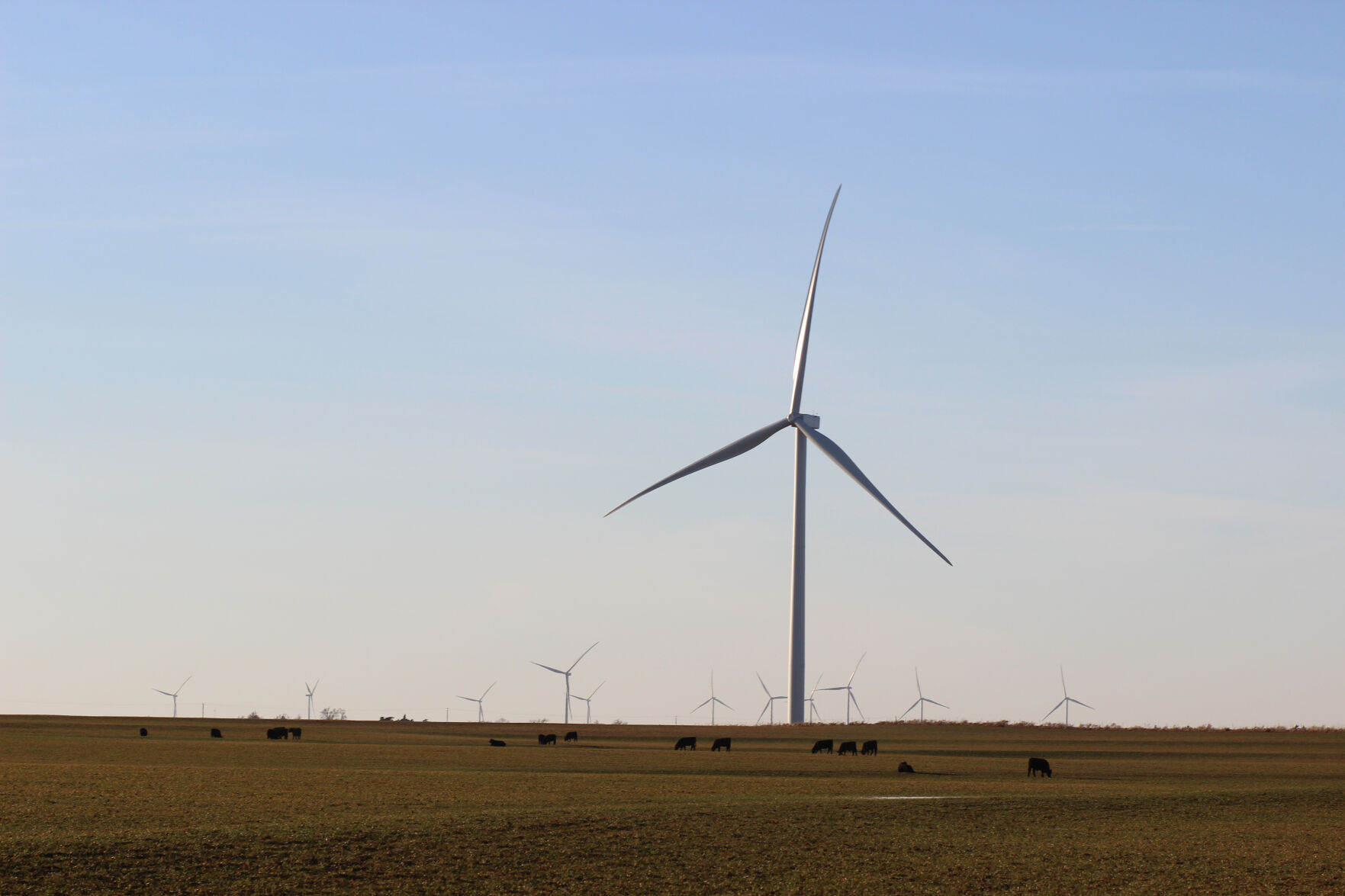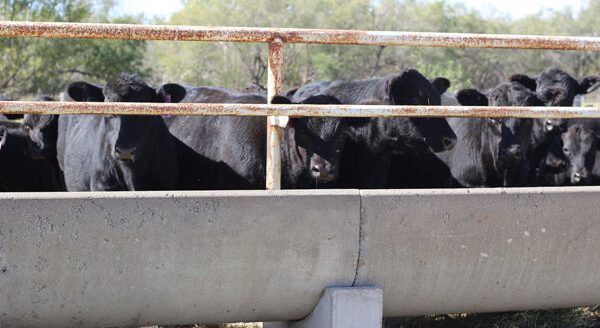Wind energy: A breeze or a bust for rural America?

Built to withstand hurricane level winds with blades longer than a Boeing 747, the massive wind turbines popping up across the plains of rural America are hard to miss. With the Biden administration taking the helm in 2021, touting clean and renewable energy as a main objective, it seems energy sources, like wind, will only gain momentum.
The president made good on his energy stance when he recently signed an executive order to replace the 645,000 federal vehicle fleet with electric cars, truck and vans. Much to the dismay of many oil and gas workers, he also signed an executive order to halt the Keystone Pipeline and ended federal subsidies for fossil fuels with the stroke of a pen. To counteract his plans to slow down oil and gas production, POTUS announced an objective to double United States offshore wind capacity by 2030. These efforts are part of the Biden administration’s goal of reaching a carbon pollution-free power sector by 2035, which would put the U.S. on a path to a net-zero economy by 2050.
Right now only about 15% of the world’s power is produced by renewable energy, and to meet these somewhat fanciful energy ambitions, change could be coming in a big way. Uncertainty of how these shifts will affect rural Americans and agriculture is palpable. Since half of the wind energy in the U.S. is produced in rural areas such Texas, Oklahoma, Iowa and Kansas, wind energy will have a significant effect on these communities—for better or for worse.
Finally, a good reason for the wind to blow
According to the Center for Climate and Energy Solution, wind energy is the second largest renewable energy source after hydropower. One of the reasons wind turbines are considered to be a key to the future of energy is that they do not produce any greenhouse gases or pollutants while in operation and are considerably cheap to run. The U.S. Department of Energy’s Office of Energy Efficiency and Renewable Energy describes wind power as one of the lowest-priced energy sources available, costing $0.01 to $0.02 per kilowatt per hour after the production tax credit.
Power prices are also more stable than coal, gas or oil because electricity from wind farms is sold at a fixed price over a long period of time. Unlike fossil fuels, wind is renewable, sustainable and as anyone across the plains of Texas, Oklahoma or Kansas can attest, the wind only seems to blow stronger each year. Finally, wind is a domestic source of energy that cannot be hijacked or price gouged by foreign countries.
According to the American Wind Energy Association, there are nearly 60,000 wind turbines operating in 41 states and two U.S. territories. Construction activity reached a new record in the first quarter of 2020, with 24,690 megawatts under construction across the country and many of the individuals profiting from these wind projects are farmers and ranchers.
Brady Weeks, president of Allegiant Land Services & Consulting, in Seiling, Oklahoma, and landowner with wind turbines on his property, plays the middleman between landowners and energy companies during contract negotiations. He works with oil, gas and renewable energy companies to secure leases, so he sees all sides of these industries and recognizes wind power for its benefits to rural property owners.
“Everyone knows when you get an oil and gas well it has a chance to be a barn burner or maybe it’s just average, but one thing that you do know in the oil and gas industry is that it is going to drop off eventually,” Weeks explained. “The takeaway from wind energy from a land owner’s standpoint is the generational income, and on top of that it is an increasing revenue stream that could last for 40 to 50 years. Our state is built around oil and gas, so we go up and down with that industry, which is kind of our downfall. The beauty of wind energy is that it is not a commodity like oil. It’s steady and doesn’t jump around.”
Weeks said the checks landowners are cut each year are dependent on how big their turbines are, but with newer contracts many landowners can expect $10,000 to $15,000 per turbine annually. Additionally, Weeks said the industry is moving toward bigger turbines and fewer of them, so payments are getting larger compared to what they were 20 years ago.
“Depending on the turbine and the megawatt capacity, with these newer projects landowners could be getting paid anywhere from $500,000 to $750,000 per turbine over the life of the contracts,” Weeks said. “It’s serious money. If you look at that from a landowner’s perspective, it’s a no-brainer. You may miss a crop, but you have another source of income.”
Fortunately, landowners are still able to use the land around the turbines for agriculture like crops or livestock, with minimal production area taken out of commission.
“Usually one turbine is going to remove one and half to two acres out of production,” he said. “We haven’t perfected the invisible turbine yet, but the surface impact is minimal.”
However, the property owner is not the only one to benefit financially from wind turbines. According to Weeks, the oil and gas industry pays a gross production tax, which is distributed across all the counties in the state. However, with wind energy projects, all the taxes stay in the county where the wind turbines stand, keeping the revenue stream local. Weeks said some larger wind farm projects—depending on the megawatt capacity—could be anywhere from $400 million to even billion dollar investments, which will benefit rural America, not only with tax dollars, but with good paying jobs that bring families to farming communities and keep small towns alive.
“Any money you can bring in from bigger companies to small, rural America is only going to improve the survivability of producers,” Weeks explained.
In fact, in Dewey County, Oklahoma, where Weeks resides, the schools are able to stay off the state school funding formula due in large part to the amount of taxes paid through wind turbine companies. Although many fear wind turbine installation across the plains because they associate them with the Green New Deal and calls for taxes on cow flatulence, to Weeks, there is a place for oil, gas and renewable energy in this country and the more energy production in his state, the better—no matter the type.
“I think we need to focus on the positives of wind energy and how the oil and gas and wind industries can coexist and work together on the grid,” he said. “Some people see it as an us versus them mentality and it couldn’t be any further from the truth from the landowner’s perspective. Yes, I think renewables are going to become more prevalent, but I think we’ll always be drilling for oil. The bottom line is Trump never stopped the windmills and Biden will never stop the fracking.”
How clean is wind energy?
Wind power is green energy and benefits rural landowners and communities financially, but some still see them as noisy eyesores that besmirch sunset views and take away for the beauty of the High Plains. Although wind turbines have a good reputation among most in the renewable energy sector, one must only look to the Environmental Protection Agency, of all places, to get the dirt on this clean energy. An EPA renewable energy briefing paper published January 2021 painted wind turbines in a less than glowing light when it stated that there are chemical management concerns as wind turbines contain oils and other lubricants that can leak out and contaminate soil and water.
Additionally, EPA said although wind turbines produce carbon-neutral energy, large amounts of fossil fuels are needed to install, transport and monitor turbines. The paper also said in most leases, wind farm operators are responsible for returning the land to its previous state at the end of the wind farm’s life, but if the windmill owner goes out of business before the end of the lease, the landowner is responsible for decommissioning and removal. Additionally, farmers have complained of difficulties crop dusting where wind turbines are present and the radio frequencies emitted from the turbines are known to foul up GPS systems.
Although they are known for being environmentally friendly, the U.S. Fish and Wildlife Service says between 140,000 and 500,000 birds of over 200 species are killed each year by wind turbines in the U.S. alone. The FWS predicts the average bird deaths from turbine collisions could reach 1.4 million a year if wind farms are increased with the DOE’s mandates. Wind turbines can also affect animal habitats like that of the lesser prairie-chicken, which is listed as a vulnerable species. Wind turbines and lesser prairie-chickens require the same rural plains in Kansas, Texas, Oklahoma, New Mexico and Colorado and they do not coexist well together. Lesser prairie-chickens fear vertical structures because their instincts associate them with raptor perches, making it difficult for them to find nesting areas to lay their eggs. Aside from this list of concerns wind energy’s seemingly squeaky clean reputation can be marred with one simple fact, decommissioned blades are piling up in landfills.
“Windmills are perhaps the least energy-producing and most physically difficult renewable waste stream to deal with,” the EPA briefing stated. “These behemoth power generators are not only laborious and expensive to transport and install, but they are burdensome to remove and recycle too.”
The briefing paper goes on to reveal the larger the wind turbine, the larger the blade diameter, and the more power generated, so turbine manufacturers are incentivized to install the largest turbines they can, which makes them more difficult to dispose. Although 85% of the turbine, including steel, copper wire, electronics and gears, can be recycled, the blades are made of fiberglass or carbon fiber—depending on their age—leaving companies with few choices when blades reach the end of their lifetime. Of the 8,000 blades decommissioned each year, most are scrapped and buried in one of three landfills in the U.S. that accepts them, including Lake Mills, Iowa, Sioux Falls, South Dakota, and Casper, Wyoming. The Casper Municipal Landfill alone is home to almost 900 blades that are buried 30 feet underground.
The topic of wind turbine blade graveyards is not only timely because of the current push toward 100% renewable energy, but also because blades last about 20 to 25 years, so many of the original turbines that were installed when wind energy became popular in the late 1990s and early 2000s are reaching the end of their life, so this issue will only grow without some major problem solving by the wind industry.
The EPA’s briefing paper summed it up best when it stated: “Until such a time as windmills can be efficiently dismantled so that component elements are separated out into units small enough to enter the existing waste stream and be reused or properly disposed of, each windfarm is a towering promise of future wreckage.”
Fortunately, wind energy companies are focused on discovering ways to recycle old blades and engineer the new blades to be reused in the future. A company called Global Fiberglass Solutions has devised a patented solution to break down the old blades and press them into pellets and fiber boards to be used for flooring and walls. GFS has opened plants in Texas and Iowa where they are able to process 99.9% of a blade and expect to break down 6,000 to 7,000 blades per year per plant—which is a big step in the right direction.
Whether they are spinning 300 feet high in the sky or buried 30 feet under, wind turbines will continue to play a part in the world’s energy production and rural America can prepare itself by learning the advantages and drawbacks of wind energy production and what is just hot air.
Lacey Newlin can be reached at 620-227-1871 or [email protected].


